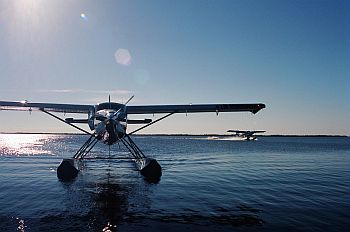 Probe Mines Limited has kept on top of its game acquiring strategic land packages in two of Ontario's most active regions: McFauld's Lake and West Timmins.
Probe Mines Limited has kept on top of its game acquiring strategic land packages in two of Ontario's most active regions: McFauld's Lake and West Timmins.
Both areas are hotbeds for mineral exploration: West Timmins for gold and McFauld's Lake in the Ring of Fire for chromite and base metals.
Probe Mines' history dates back to 1933, but the Company reformed in 2001 under its present management and directors. Probe began its exploration efforts in both mining camps early on, creating an unassuming presence as a hard-working, lean junior miner that expends its energy and money in the ground.
In 2007, the Company raised $5.5 million and, to date, has spent $1.5 million on exploration.
"We run a very lean ship," said Probe's president and CEO, Dr. David Palmer, who performs several roles within the Company, allowing him to monitor the programs more closely. "We've kept our costs lower, so we've been able to stretch our exploration dollars further. There is never any waste in our exploration."
Palmer said the Company's drilling costs run about 30 per cent less per metre than other companies, allowing a better balance sheet.
Probe also has a healthy five per cent net smelter return on claims covering a portion of Agnico-Eagle Mines' Goldex Mine near Val d'Or, Quebec, which is anticipated to provide a revenue stream as the 1.6 million ounce deposit is mined.
Probe's 52-claim West Timmins package in Bristol Township is adjacent to two of Lake Shore Gold's assets: the 1.2 million ounce West Timmins Mine and the newly acquired Thunder Creek property's Rusk/Porphyry Zone discoveries, where drilling revealed a high-grade gold intersection reported at 12.75 g/t gold over 83.4 metres. Drilling on Probe's property has identified similar alteration, indicating the potential for gold mineralization. Presently, Lake Shore Gold is completing an agreement to acquire 55 per cent of the property and has the option to acquire another 15 per cent after June 2010.
The other hot spot is the Ring of Fire in the James Bay Lowlands.
Probe began exploring in that area shortly after the first volcanic massive sulphide discovery in 2002 and secured a substantial land package of almost 15,000 hectares.
"We were fortunate to stake ground in both the ultramafic complex that hosts nickel, copper and chromite, and the volcanic sequence, which hosts the VMS deposits," Palmer said.
The Company has four land packages in the McFauld's Lake mining camp, one of which is a joint venture with Noront Resources Ltd. The JV property has 87 land claim units made up of four claim blocks. Two of those are less than 450 metres from Noront's Eagle One high-grade nickel/copper discovery.
The other two blocks are southwest and northeast along strike of the chromite discovery.
Probe's 5,000-metre drilling program in 2009 on the JV property led to the discovery of the Black Creek chromite deposit with high-grade values greater than 40 per cent Cr203 in the massive zones on the hanging wall/footwall of the deposit.
Resource estimate
"We've taken the drilling on this property to 50-metre spacing, good enough to have a NI 43-101 resource estimate done," said Palmer, who plans to model and further define the chromite resource. He also intends to test exploration targets of other claims on the JV property for nickel, copper and chromite.
Probe is the operator of the joint venture with Noront Resources until June 2011.
Probe's nearby 100 per cent-owned McFauld's West property, due north of Eagle One, is also under consideration in 2010's exploration budget. It sits on the contact in the centre of the "Ring" along strike of some of the structures that run through Eagle One.
The Company's Tamarack and Victory properties are being evaluated for further exploration and remain a strategic part of Probe's portfolio.
"We have the best of both worlds in Tamarack," Palmer said, explaining they discovered high-grade copper mineralization in 2005 on the northern extension of the VMS zone and also have ground that covers part of the interpreted mafic complex which hosts vanadium, a metal used in steel and other applications including rechargeable batteries.
Airborne geophysics and drilling on the Victory project have indicated the potential for nickel, copper, chromite, platinum and palladium. To date, more than 40 conductor targets have been realized, and 30 holes totalling over 4,500 metres were drilled.
As Probe continues its exploration on its various land packages, discovering the unexpected may soon become the norm in this rich minerally-diversified region.
"It is an exciting place, because you don't know what you're going to find next!" Palmer said.
www.probemines.com
TSX-V:PRB


.jpg;w=120;h=80;mode=crop)